BASF’s new azole fungicide set for 2019
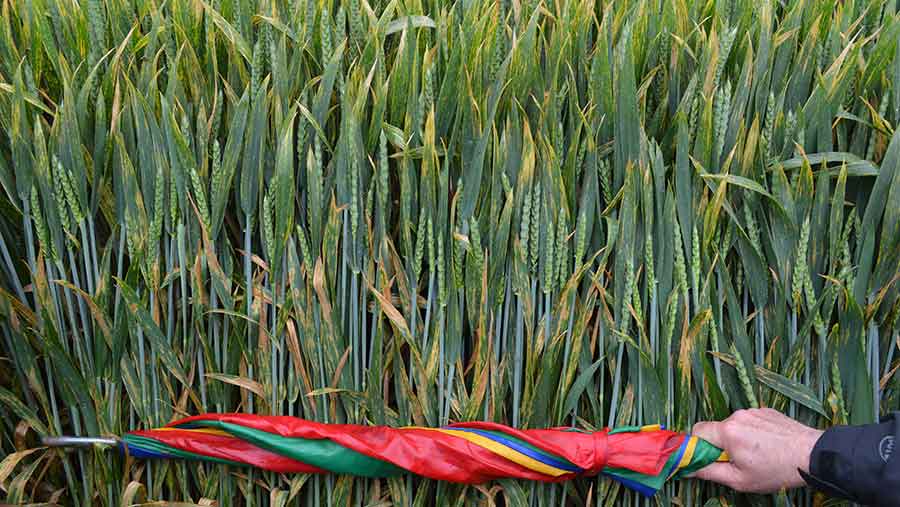 © David Jones/RBI
© David Jones/RBI Agrochemicals giant BASF is set to launch a new “blockbuster” azole cereal fungicide as early as 2019 and then a blackgrass herbicide with a new mode of action early next decade.
The fungicide, called Revysol, is likely to be used as a partner to help slow down fungicide resistance, while the blackgrass killer could be the biggest breakthrough in grassweed control for more than 10 years.
Markus Heldt, president of BASF Crop Protection, said the fungicide is the German group’s most exciting near-term launch and is needed to counter increased disease problems.
“This is our largest-ever launch and will be in more than 50 countries and in more than 60 crops in a difficult environment,” he said at a group briefing in Germany this week.
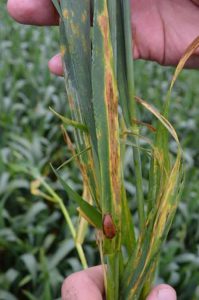 This azole fungicide is claimed to have a high level of efficacy and is likely to be partnered with SDHI fungicides to control troublesome wheat diseases such as septoria and yellow rust.
This azole fungicide is claimed to have a high level of efficacy and is likely to be partnered with SDHI fungicides to control troublesome wheat diseases such as septoria and yellow rust.
Blackgrass killer
The new grassweed killer under development is a residual pre-emergence product and will be aimed at the core cereal herbicide market in Europe.
See also: Dormant blackgrass means growers must play waiting game
“This herbicide has a new mode of action in cereals in the UK and we are confident it has a good regulatory profile,” Mr Heldt told Farmers Weekly at the group’s headquarters in Ludwigshafen, on the River Rhine about 50 miles south of Frankfurt.
He said it would be a big product for BASF and a very important one for UK farmers.
“The fastest it may be available would be autumn 2020, but it is more likely to be available in 2021 or 2022,” he added. Mr Heldt clarified that the herbicide will not offer a completely new mode of action, but a different mode of action to those currently seen in UK cereal production.
New azole fungicide
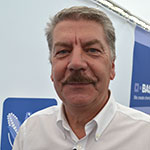
Bill Clark
Looking at the fungicide, independent expert Bill Clark said Revysol has the eradicant properties of the older azoles seen some 10-15 years ago before their efficacy started to decline, especially against septoria.
“This is important for the whole industry, and will be a partner for all SDHIs, and SDHIs which are coming,” added Mr Clark, who is technical director at crop consultant Niab.
Older azoles such as prothioconazole and epoxiconazole have declined in efficacy against septoria in wheat over the past decade, but it is hoped this new azole could be used with the new generation of SDHIs launched in the past five years and could delay fungicide resistance.
“Revysol is better than prothioconazole and epoxiconazole as septoria has not adapted to it,” he said.
Azoles have been the backbone of fungicide programmes since the mid-1970s due to their broad spectrum of disease control against septoria, rusts and fusarium, and their systemic action give good eradicant and protective properties.
Good efficacy
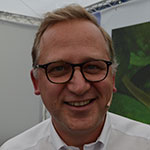
Rolf Reinecke
Rolf Reinecke, head of BASF’s global marketing for fungicides, said the new product showed better efficacy compared with older azoles and showed no side-effects.
“We have a highly active fungicide with a favourable profile from a regulatory point of view,” he added.
Mr Reinecke said the first launch of the new azole is set for the 2018-19 season, which for the UK would mean spring 2019, and it could be the first new azole to be launched since prothioconazole more than 10 years ago.
The development comes at a time when the use of azoles is coming under pressure due to fears they could be classed as endocrine disruptors, meaning they could interfere with human hormone levels.
This could mean older azoles might be restricted or even banned in the future, so Mr Reinecke is keen to stress the new azole has a good regulatory profile.
Fungicide resistance
Most widely used azoles such as prothioconazole, epoxiconazole, tebuconazole and metconazole are of the triazole sub-group, as is Revysol.
However, Rosie Bryson, team lead for BASF’s arable fungicide development, says Revysol is a isopropanol type of triazole – different from the other four – and this may help to slow down the build-up of fungicide resistance.
“Revysol has so far given good control of shifted isolates of septoria, and this could be useful in reducing the mutation of the disease,” she said.
Although there are only low levels of mutations of septoria from the use of new SDHIs, growers are urged to continue using three modes of action against septoria as part of a resistance-management strategy.
This means using SDHIs in conjunction with azoles and also a multi-site fungicide such as chlorothalonil.
BASF could look at bolt-on acquisitions
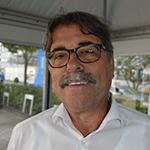
Markus Heldt
BASF will look at possible acquisitions that may become available from forced divestments from three agrochemical mega-mergers that are being worked on or are being planned.
Although it declined to comment on whether it would join in the merger mania, the German giant said it would consider smaller bolt-on acquisitions.
Three big deals are planned – a merger of DuPont and Dow, ChemChina’s planned takeover of Syngenta and Bayer is bidding for control of Monsanto.
“There are three deals under discussion, so we would look at possible divestments from these,” said BASF’s Markus Heldt.
Competition authorities could require the companies involved in the mergers to sell some assets to win approval for these three deals, and it is these assets BASF could be interested in acquiring.
Mr Heldt said these possible deals could be similar to a deal in 2012 when BASF acquired US crop technology company Becker Underwood, which included seed treatment and bio-pesticide businesses, for US$1.02bn.
The German giant only makes 8% of its global sales from agriculture, some €5.8bn in 2015, with the bulk of group sales coming from its base chemical business to give the group a total annual turnover of €70.5bn.
However, the agricultural crop protection business delivers a higher proportion of the group’s profits at 16%, while 26% of group research-and-development spend is directed at agriculture.
Despite the sharp 9% fall in crop protection sales in the first half of 2016, compared with a 7% rise in 2015, BASF still aims to achieve €8bn euros of annual crop protection sales by 2020.
Currently, BASF is the third-largest agrochemicals group in the world after Syngenta and Bayer, but if the DuPont-Dow merger is approved with limited disposals then this could push BASF down to number four.

